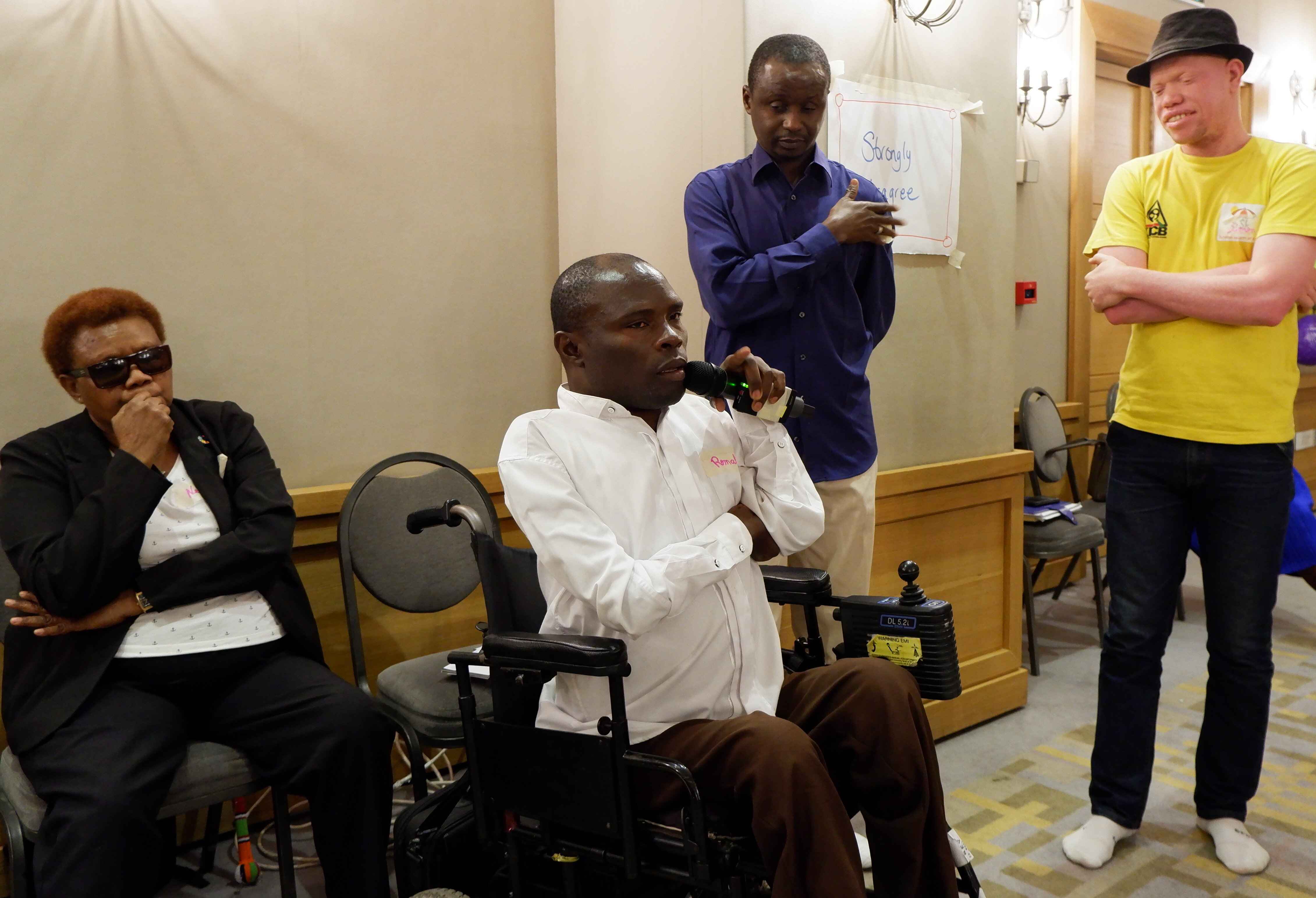Inclusive Education in Africa and Global Disability Summit 2018
We will review the commitments related to Inclusive education that were made during the Global Disability Summit in 2018 and attempt to provide a status of implementation.
- 18 November 2021

Introduction
Africa is associated with Ubuntu values such as inclusiveness and treating others with fairness and human dignity. Such values align with human rights and social justice principles and are also integral to a social approach to inclusive education. Several global developments have been endorsed and ratified by most African countries, such as the Education for All campaign, the Salamanca Statement and Framework for Action on Special Needs Education, the Millennium Development Goals, Sustainable Development Goal (SDG) 4, the Education 2030 Incheon Declaration and Framework for Action for the implementation of the SDG 4 framework, and the Convention on the Rights of Persons with Disabilities. However, the emphasis in these education policies seems to be on integrating students with special needs or disabilities into public education, mainly by placing them in separate units or classes attached to mainstream schools, or in special schools. It is therefore essential that, within the Ubuntu approach, everyone belongs to a greater community.
In this week’s blog, we will review the commitments related to Inclusive education that were made during the Global Disability Summit in 2018 and attempt to provide a status of implementation. We reviewed the 2-year on report on progress of implementations.
Status Children With and Without Disabilities in Education
According to World Health Organization 10-15 percent of school-age children in Africa have some sort of disability. According to a World Bank Report than 10% of all children with disabilities under the age of 14 are attending school in Africa.
Over 400 million children are currently living on the African continent and the number is rising. Over one-fifth of children between the ages of about 6 and 11 are out of school.
Commitments Made by National Governments
National Governments in Africa make various Commitments on Inclusive Education including the development of an inclusive education policy, Implementation of an existing policy, and teachers' training and capacity-building.
A bird's eye view of the commitments made:
- 16 Countries out of 54 countries in Africa have made commitments in the area of inclusive education.
- 11 Countries have made commitments that are directly influencing inclusive education
- 5 Countries have made indirect commitments influencing inclusive education
- 5 Countries have specifically committed to teachers training and capacity building
- 5 Countries have committed to developing an inclusive education policy
- 1 Country already has an inclusive education policy
Implementation of Commitments Made
Kenya leads the way in the implementation of the commitments made with updates in 5 areas. 7 other countries have given updates on at least 1 area.
A bird's eye view of the implementation of commitments:
- 8 Countries have updated on their implementation of commitments
- 8 Countries have not provided updates
- Cameroon has inclusive education is being practiced in 68 schools in their country
- Kenya has developed a Marshal Plan to support Learners and Trainees, progressive allocation of funds for pieces of equipment, infrastructure, and teacher training, has set aside funds to procure assistive devices and technologies for use by learners with disabilities, funds from infrastructural development budget is allocated to infrastructure development in respect to learners and trainees with disabilities and National Referral Psychoeducational Assessment Centre at the Kenya Institute of Special Education has been set up.
- Rwanda has developed an Inclusive and Special Education Policy and has cost for its implementation
- Nigeria has ongoing consultation on the total overhauling of the Education sector to ensure education for all
- Senegal has developed a national inclusive education policy and cost for its implementation
- Sierra Leone has developed an inclusive education policy
- Somalia has started the process of drafting national disability law and framework for the visually impaired to sit national examinations in accessible formats
- Uganda started work on one of its commitments while working on 3 other commitments that are yet to start
Conclusion
While the political will for change seems clear, there is often a gap between theory and practice. This is where the emphasis between now and 2030 must lie.
Inclusive learning goes hand in hand with Universal Design for Learning (UDL), a set of principles for curriculum development that gives all students an equal opportunity to learn. UDL provides a blueprint for creating instructional goals, methods, materials, and assessments that work for everyone, not a single, one-size-fits-all solution but rather flexible approaches that can be customized and adjusted for individual needs. Successful inclusive education happens primarily through accepting, understanding, and attending to student differences and diversity, which can include physical, cognitive, academic, social, and emotional. For Inclusive Education to be successful anywhere the above factors play a crucial role. It is important for governments and other agencies to commit to working on these areas.
This information comes from progress self-reported by entities who made pledges at the GDS 2018, collected by the GDS secretariat to incentivize accountability on commitments and but is not an external monitoring process.
Recent posts
- Reporting is open for GDS Commitments!
- CALL FOR PROPOSALS - Global Disability Summit Grants
- Keep up with post-Global Disability Summit events!
- First day of Global Disability Summit Results in ground-breaking Commitments to Disability Rights from Global Leaders
- Global Disability Summit 2022 (GDS22) in the News
- World Leaders join Together for Global Disability Summit 2022
- Gearing up for the Global Disability Youth Summit on 14 February 2022
- Disability is Everyone's Business
- Global Disability Summit 2022 (GDS22) Side Events Toolkit
- No Lost Generation